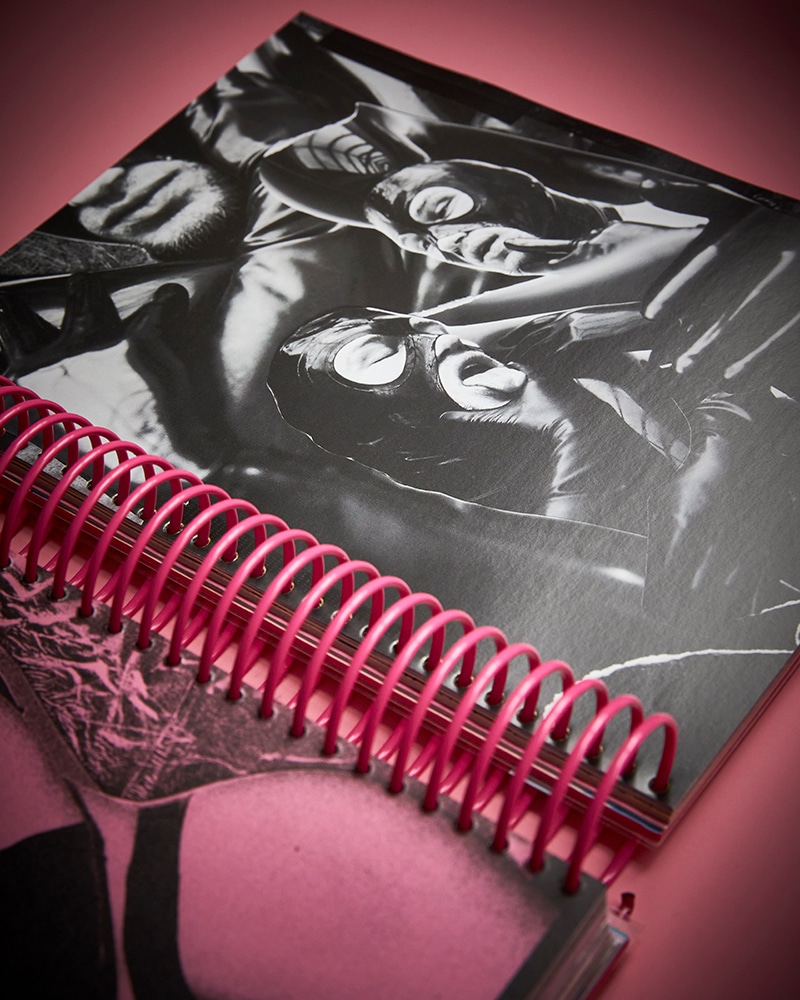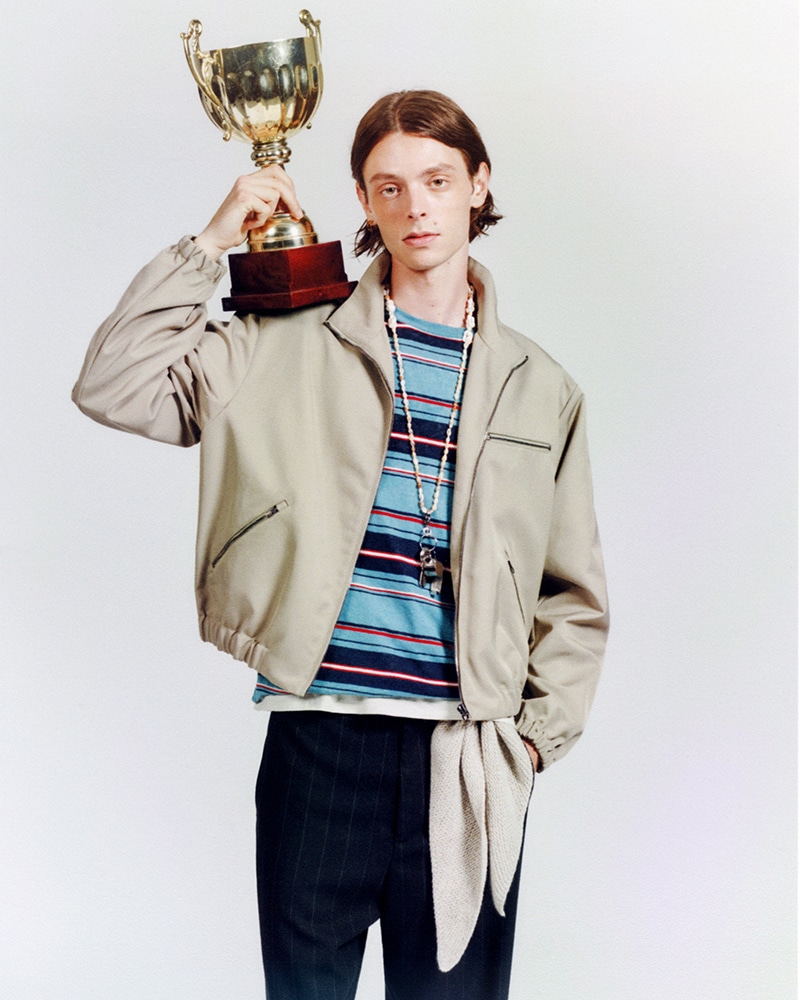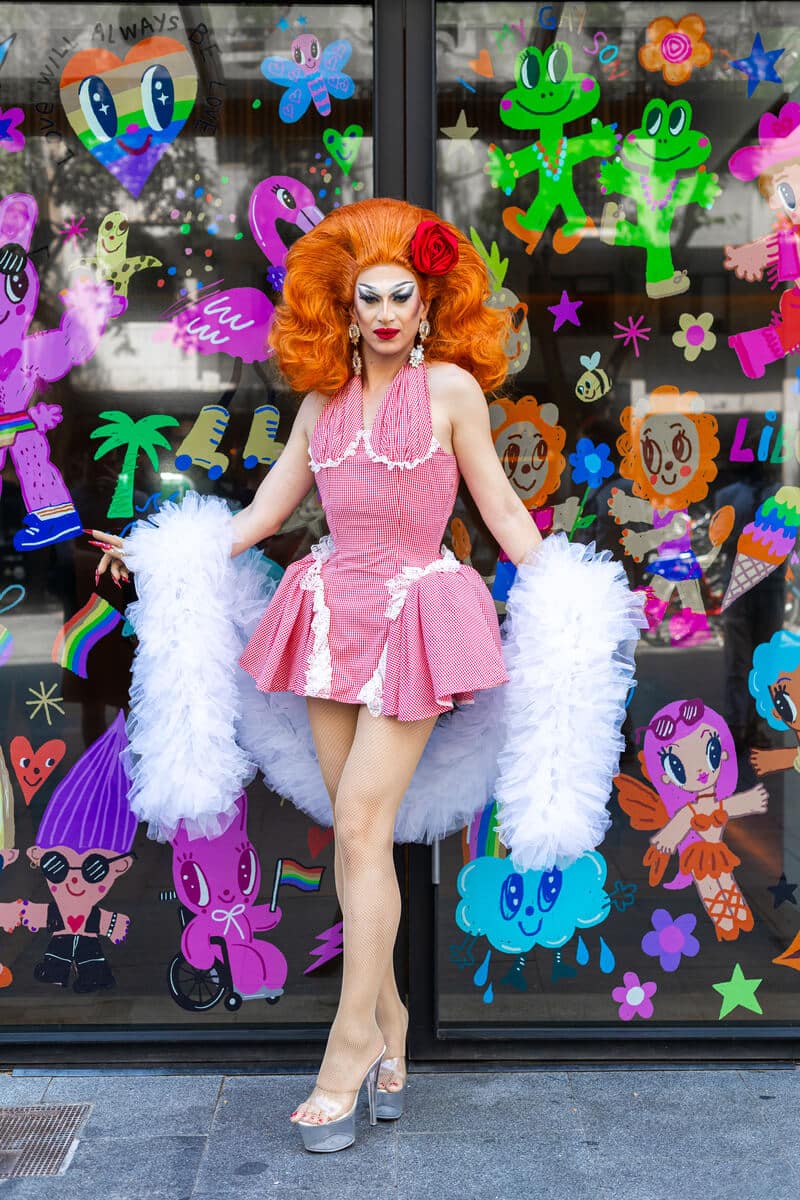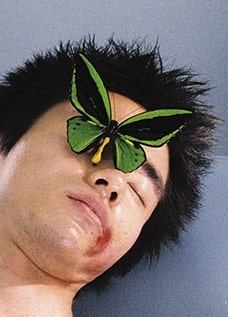I want it to be soft Exhibition – The journey of Bas Kosters
by Adriano Batista

From 14 May to 4 September 2016, Museum Arnhem presents I want it to be soft. The journey of Bas Kosters, a retrospective of works by one of the Netherlands’ most eccentric fashion designers, Bas Kosters (Zutphen 1977).
The connection with Museum Arnhem is obvious: Kosters studied Fashion and Design at the Rijn IJssel College in Arnhem and attended a master’s programme at the ArtEZ University of the Arts in Arnhem. There he developed his graduation collection ‘Two Teacups and a Frying Pan’, for which he won the Robijn Fashion Award that gave his career a flying start.


Kosters’ work interprets social and cultural issues in a way that is unparallelled in Dutch fashion, and is an important source of inspiration for young designers. Kosters established the Bas Kosters Studio in 2005, and has since launched many collections and developed numerous collaborations with companies such as Zeeman, Bugaboo, Heineken and, more recently, Wehkamp. Kosters designs using his own particular illustrative imagery and utilizes from almost every discipline: drawing, painting, collages, sculptures, dolls, installations, products, jewellery, graphic design, photography, music, performances and theatre. His work addresses topical social issues such as overconsumption, race and gender issues and ideals of beauty.


Bas Kosters and designer, stylist and curator Maarten Spruyt will create a world where clothing, installations, drawings, illustrations, textile art, ‘soft’ sculptures and videos engage in a dynamic dialogue. As the subtitle The journey of Bas Kosters suggests, we follow the work as a vivid journey through the world of Bas Kosters: visitors travel through 13 years of fashion and design based on a series of different themes. For this exhibition Bas will also create new works, including works with other designers and creators. One example of a new creation is the mask that is used in the exhibition campaign, designed by Ine Mulder and photographed by Marc Deurloo.


A monograph will be presented at the exhibition. This book is partly a retrospective, but is also relevant to the present and to Bas Kosters’ current vision as a designer. New links are identified within his oeuvre and previously unseen treasures will be revealed. Several people who have shared long and close collaborations with Bas Kosters will write short texts about him and his work: an inspirational and above all visual reference work that, with its essays, also informs the reader about Kosters’ vision and direction.

Lost In Berlin
Introducing ANGUS CHIANG
actual
I want it to be soft Exhibition – The journey of Bas Kosters
previous
Lost In Berlin
next
Introducing ANGUS CHIANG
Alexis Otero captured by the lens of Lucas Lei, in exclusive for Fucking Young! Online.
Levi’s® is celebrating Oasis’ long-awaited reunion with a new collection that combines the band’s iconic style with classic denim.
We had the chance to catch up with Ohio-born, Brooklyn-based designer Kody Phillips in his Paris Fashion Week showroom where he unveiled his Spring/Summer 2026 collection.
Dean and Dan doubled down on their love of fashion’s most dramatic moments, remixing 80s power dressing, 90s grunge, and 2000s excess into something entirely their own.
Cult Korean menswear brand THUG CLUB teamed up with designer IZZY DU for an unforgettable dinner and afterparty at the mythical Lapérouse during Paris Fashion Week.
Jonathan Anderson has always treated fashion like a carefully assembled collection, mixing the unexpected, trusting his instincts, and binding it all together with a strong point of view.
The Palau Reial de Pedralbes provided the perfect backdrop as IED Barcelona unveiled its 21st Fashioners of the World showcase.
This season, Camper unveils its first collaboration with ISSEY MIYAKE’s Peu Form, designed by Satoshi Kondo.
A collection that exudes freshness, confidence, and a desire to write a new page in the history of the Maison.
“Poison Ivy” tells the story of a transfer student’s dangerous fixation with his school’s golden boy.
Aitor Santomé’s AHOY Diary on Board is a glitter-drenched, holographic love letter to queer joy, fashion, and the magic of the open sea.
Louis Vuitton has introduced its latest Silver Lockit 2025 collection, developed in partnership with Felix, the brand’s Ambassador and UNICEF Goodwill Ambassador for Korea.
The Salomon XT-6 wasn’t made for sidewalks. Born for punishing mountain trails and ultra-distance races, its technical DNA speaks to wilderness endurance.
Stéphane Ashpool has opened Souvenir Pigalle at 17 Rue Duperré, a place built on his memories of growing up in Pigalle.
The book challenges narrow ideas of beauty and masculinity by simply letting men exist, unpolished and unapologetic, across generations.
The Guggenheim Museum Bilbao has opened the Barbara Kruger exhibition, Another day. Another night., curated by Lekha Hileman Waitoller and sponsored by Occident. This exhibition expands her audience and influence while pushing the limits of modern art… »
Forget ironed polos and pristine blazers. Peter Wu’s Spring/Summer 2026 collection is a tribute to the thrifted sweaters, the cut-off Dickies, the flannel pajama pants worn to early morning lectures.
Amsterdam’s Daily Paper has teamed up with Oakley to reimagine the Gascan sunglasses, combining streetwear storytelling with technical innovation.
Berlin’s KitKat Club became the perfect runway for #DAMUR’s Spring/Summer 2026 collection, “Get Wet.”
COLRS unveiled its Spring/Summer 2026 collection “JUMPING FENCES” during Berlin Fashion Week, bottling the reckless energy of a Brazilian summer.
On July 1st at Berlin’s old Tempelhof Airport, BALLETSHOFER staged a runway show that challenged how we dress for travel.
At Berlin Fashion Week, Andrej Gronau presented its Spring/Summer 2026 collection, Alpine Fiction.
At Berlin Fashion Week, Orange Culture unveiled its Spring/Summer 2026 collection, “In the Shadows.”
Berlin Fashion Week served as the stage for SF1OG’s SS26 collection, a deeply personal examination of love’s darker edges, obsession, fragility, and emotional unraveling.
Lenny aka Futura 2000, took the time to speak with us ahead of the exclusive launch.
This summer, Ludovic de Saint Sernin revisits Fire Island to relaunch its swim line with a campaign steeped in erotic freedom and community reverence.
Chitose Abe remains one of the most avant-garde voices of her generation, capable of injecting freshness, desire, and direction into a fashion that needs it more than ever.
K-Way’s new men’s summer collection focuses on keeping things cool, comfortable, and practical.
PUMA and JJJJound have done it again. Their latest collaboration takes the spiked silhouette of the 1999 PUMA Mostro and strips it down to its essentials.
This Pride month, The Barcelona EDITION isn’t just waving a flag—it’s becoming one. From graphic art explosions to drag royalty brunches, the hotel pulses with a raw, vivid celebration of queer creativity, inclusion, and unfiltered joy.














































